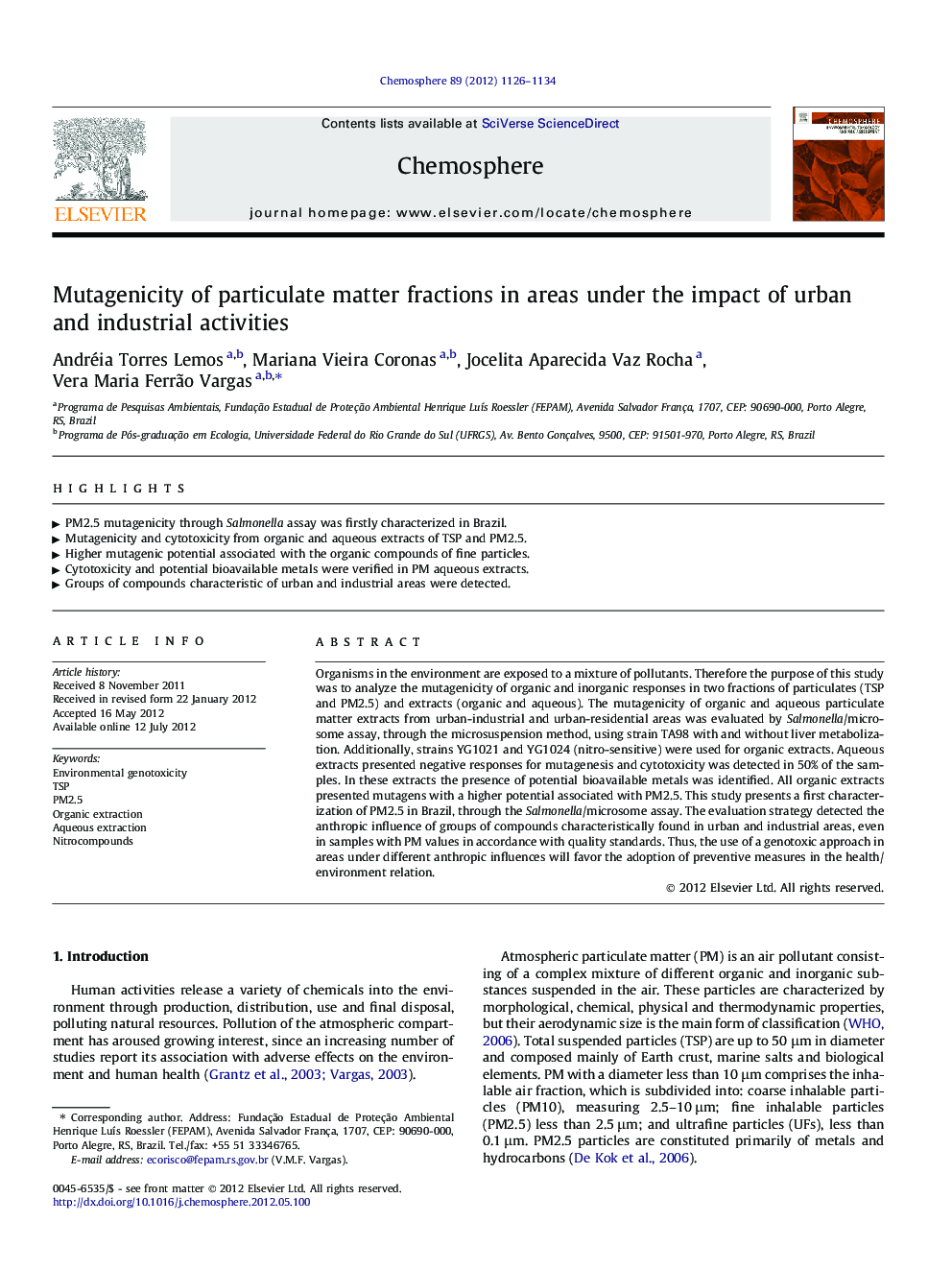| Article ID | Journal | Published Year | Pages | File Type |
|---|---|---|---|---|
| 4409826 | Chemosphere | 2012 | 9 Pages |
Organisms in the environment are exposed to a mixture of pollutants. Therefore the purpose of this study was to analyze the mutagenicity of organic and inorganic responses in two fractions of particulates (TSP and PM2.5) and extracts (organic and aqueous). The mutagenicity of organic and aqueous particulate matter extracts from urban-industrial and urban-residential areas was evaluated by Salmonella/microsome assay, through the microsuspension method, using strain TA98 with and without liver metabolization. Additionally, strains YG1021 and YG1024 (nitro-sensitive) were used for organic extracts. Aqueous extracts presented negative responses for mutagenesis and cytotoxicity was detected in 50% of the samples. In these extracts the presence of potential bioavailable metals was identified. All organic extracts presented mutagens with a higher potential associated with PM2.5. This study presents a first characterization of PM2.5 in Brazil, through the Salmonella/microsome assay. The evaluation strategy detected the anthropic influence of groups of compounds characteristically found in urban and industrial areas, even in samples with PM values in accordance with quality standards. Thus, the use of a genotoxic approach in areas under different anthropic influences will favor the adoption of preventive measures in the health/environment relation.
► PM2.5 mutagenicity through Salmonella assay was firstly characterized in Brazil. ► Mutagenicity and cytotoxicity from organic and aqueous extracts of TSP and PM2.5. ► Higher mutagenic potential associated with the organic compounds of fine particles. ► Cytotoxicity and potential bioavailable metals were verified in PM aqueous extracts. ► Groups of compounds characteristic of urban and industrial areas were detected.
